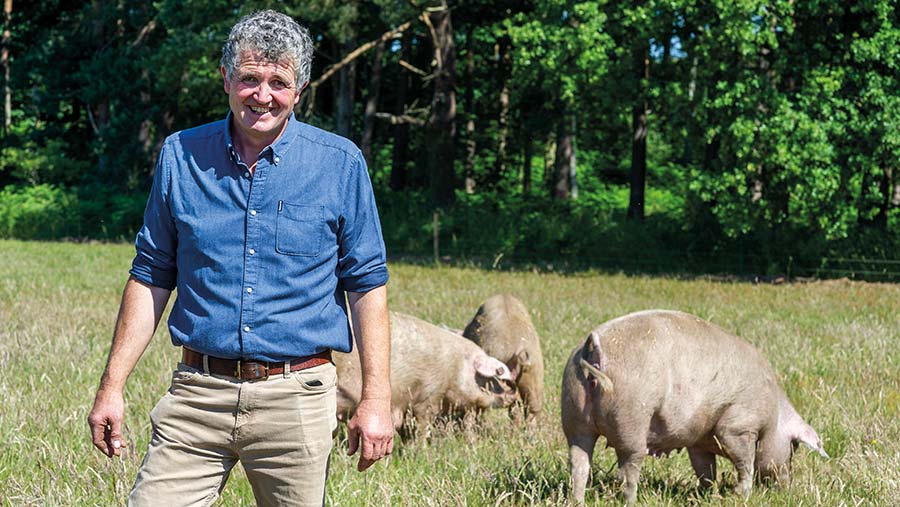Farmer Focus: PRRS spike prompts ‘cluster group’ approach
 Rob McGregor © Jason Bye
Rob McGregor © Jason Bye I reported last month on the bad news we had received following routine piglet ear-prick testing, that both our herds were showing positive for porcine respiratory and reproductive syndrome (PRRS).
This had come as a bit of a blow, just when we could see signs that herd performance was starting to climb again, after a bit too long below 27 pigs a sow a year.
We have not yet seen much in the way of classic PRRS symptoms, such as increased numbers of sows not in pig or poor piglet numbers being born, and I hope that stays the case.
See also: Advice for controlling PRRS in pigs
However, it’s likely less serious issues that were present, but not doing much harm, will flare up and take the shine off things yet again.
We are not alone. PRRS has been a big issue this year and is affecting many farms, so our vets and breeding team are working to collaborate with a “cluster group” of farms in a local problem area.
Part of this plan is to reach out to other large businesses within these hot spots to improve communication and work together more closely on disease control.
As vaccines alone don’t seem to be controlling PRRS as they once did, they would like to start looking at other areas where we can improve things, like aspects of biosecurity and what can be done if a farm becomes unstable, to limit other farms close by also destabilising.
They have pulled a few ideas together for review. Some I understand are going to be more challenging than others to implement.
One of our senior vets spoke at a breeder/farmer meeting last week, and she made it very clear just how damaging this condition can be if it’s allowed to get out of control.
I’ve received an invite to the first PRRS cluster group meeting. This will kick off with a roundtable discussion, so we can start working together to see what can be changed or added into the farm’s protocol to improve biosecurity.
Obviously, this type of strategy requires the support and commitment of all the producers in the area, and I hope very much it is received well.

